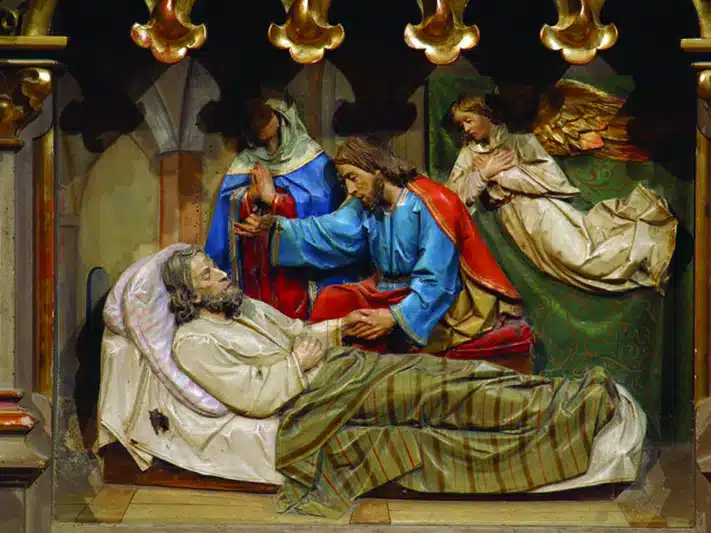On March 19, we celebrate Saint Joseph, husband of Mary. On May 1, we celebrate Saint Joseph the Worker. Why are there two feasts for the same saint?
The worldwide Church has long honored Saint Joseph, and his feast entered the worldwide calendar in 1324. The feast of Saint Joseph the Worker was added in 1955.
Even though the Catholic Church had opposed Communism for over 100 years by that date, many people felt that the Church was not as concerned about ordinary workers as the Communists were. This feeling was especially true in Europe. Because the Communists for many years had been celebrating their movement on May 1, Pope Pius XII selected that date for the feast of Saint Joseph the Worker.
On May 1, 1933, Dorothy Day distributed the first copies of The Catholic Worker, a newspaper that sought to challenge Communist claims that only they were looking out for the best interests of working women and men.
Popes Leo XIII and Pius XI had sought to answer the Communist challenge through their encyclicals Rerum Novarum and Quadragesimo Anno (1891 and 1931, respectively).
In addition to the many feasts of Mary throughout the liturgical year, the Church celebrates two feasts for Saint John the Baptist: his birth (June 24) and his martyrdom (August 29).
Saint Joseph: ‘Protector of the Redeemer’
The men’s movement in the Catholic Church has recently led to an increase in devotion to Saint Joseph. “Protector of the Redeemer” is the English title of an apostolic exhortation on Saint Joseph, written by Saint John Paul II and released on August 15, 1989.
On March 20, 2013, during the Mass for the beginning of his Petrine ministry, Pope Francis asked: “How does Joseph exercise his role as protector? Discreetly, humbly, and silently, but with an unfailing presence and utter fidelity, even when he finds it hard to understand. From the time of his betrothal to Mary until the finding of the 12-year-old Jesus in the Temple of Jerusalem, he is there at every moment with loving care.
“As the spouse of Mary, he is at her side in good times and bad, on the journey to Bethlehem for the census and in the anxious and joyful hours when she gave birth; amid the drama of the flight into Egypt and during the frantic search for their child in the Temple; and later in the day-to-day life of the home of Nazareth, in the workshop where he taught his trade to Jesus.”
Later the pope added: “Caring, protecting, demands goodness; it calls for a certain tenderness. In the Gospels, Joseph appears as a strong and courageous man, a working man, yet in his heart we see great tenderness, which is not the virtue of the weak but rather a sign of strength of spirit and a capacity for concern, for compassion, for genuine openness to others, capacity for love. We must not be afraid of goodness, of tenderness!”


